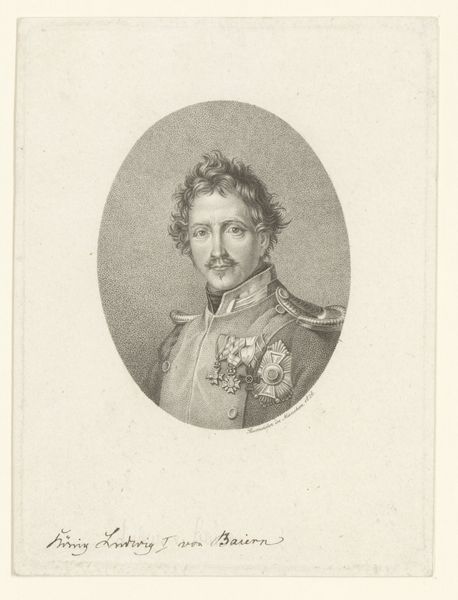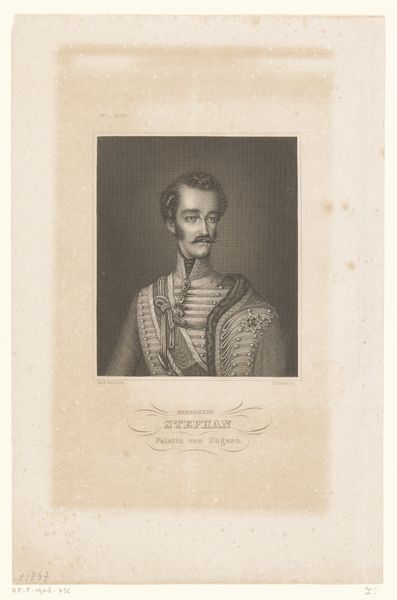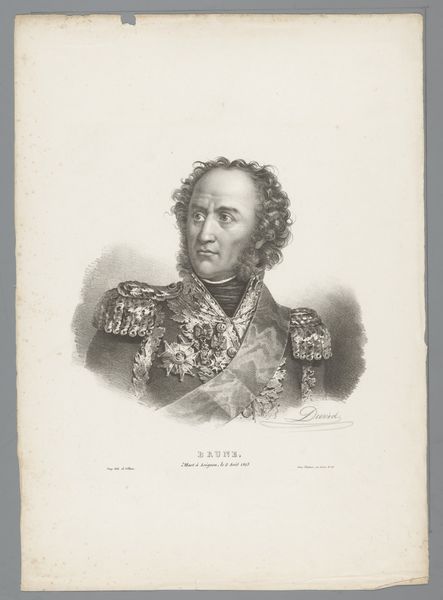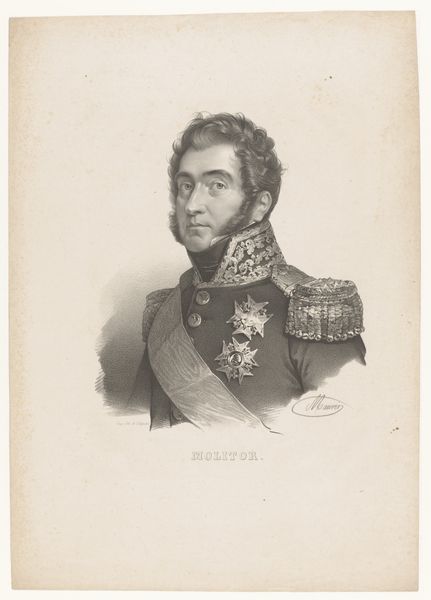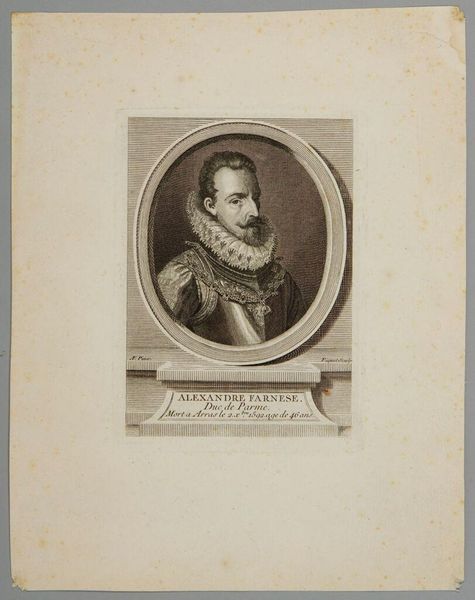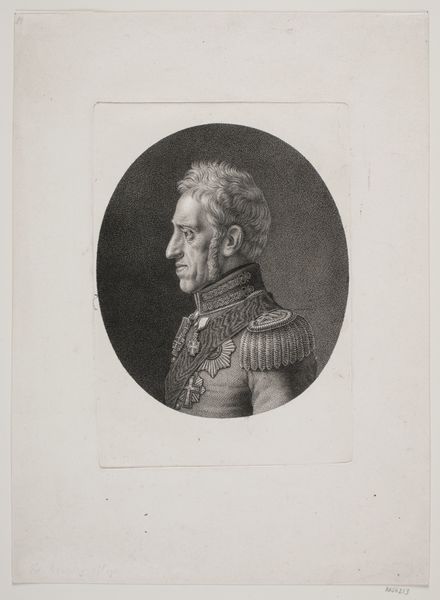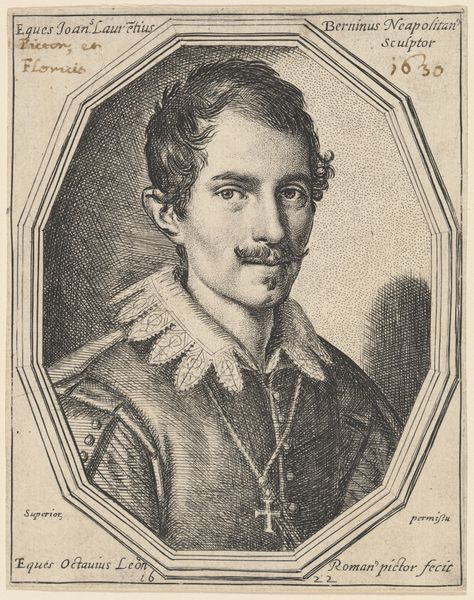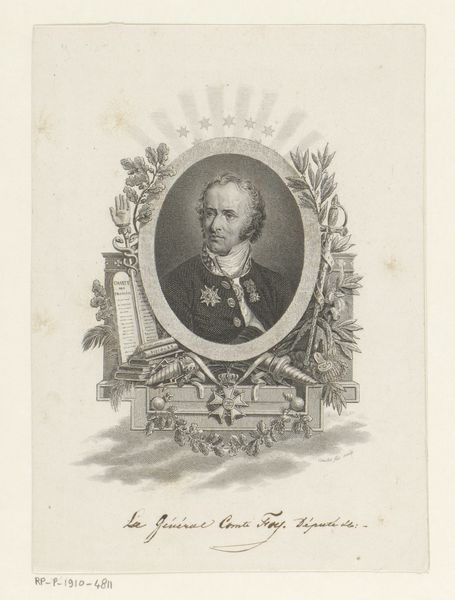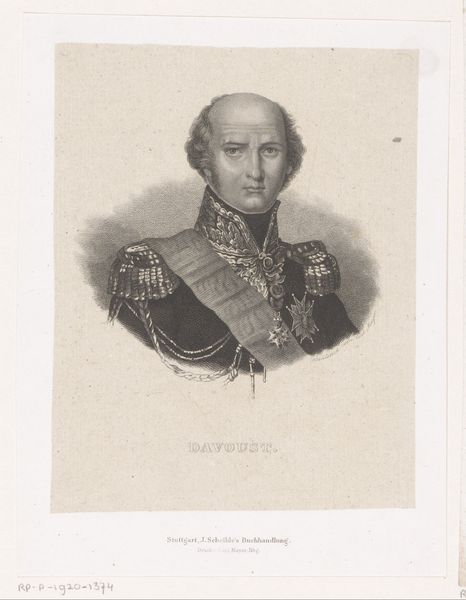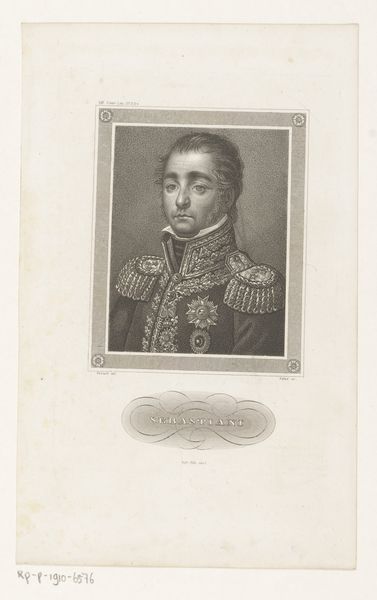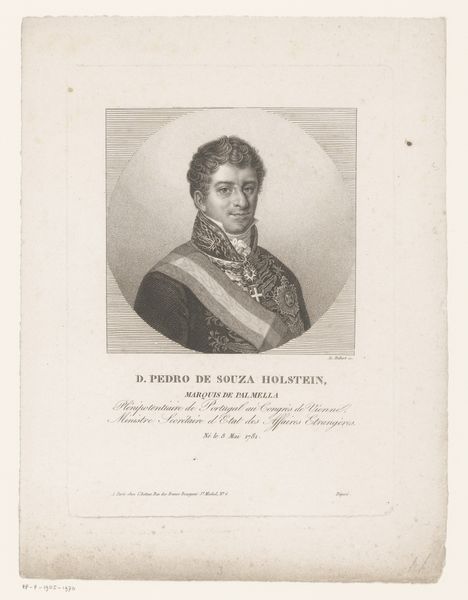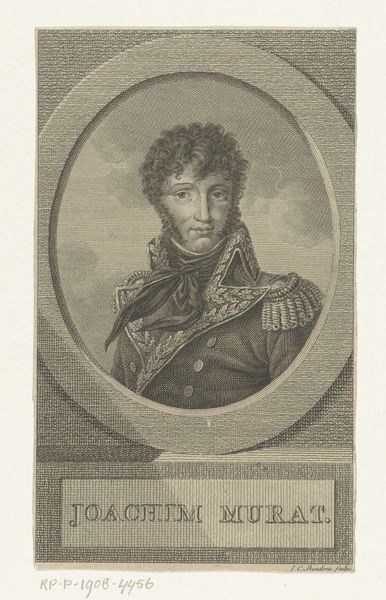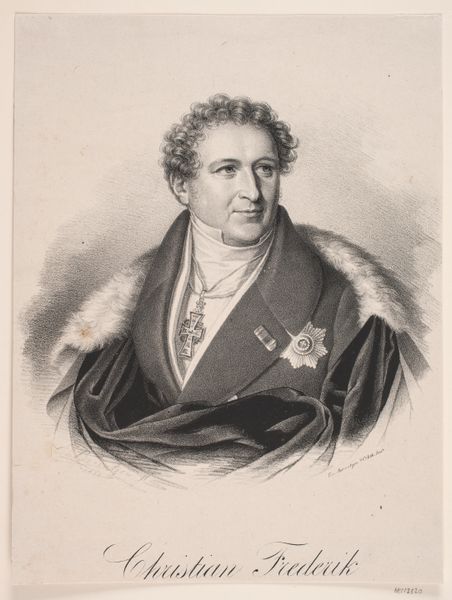
drawing, pencil, engraving
#
portrait
#
pencil drawn
#
drawing
#
pencil sketch
#
old engraving style
#
pencil drawing
#
pencil
#
history-painting
#
engraving
Dimensions: height 152 mm, width 96 mm
Copyright: Rijks Museum: Open Domain
Editor: This is a drawing of "Portret van Ferdinand VII, koning van Spanje", made between 1794 and 1833 by Johann Gottlob Henschke. The lines of the pencil really give it a feeling of delicacy despite the powerful regalia on display. What do you see in this piece from a formalist point of view? Curator: Precisely. Henschke’s handling of line is paramount here. Note the careful hatching used to model the king's face and drapery, creating a subtle interplay of light and shadow. The engraving exhibits a structural framework composed of contrasting shapes and values. Consider how the artist juxtaposes the crisp lines defining the medals against the softer rendering of the face, producing visual interest. How does the oval shape of the portrait contribute to its aesthetic? Editor: It contains it, creates a neat boundary around the image and focuses on the person. But isn't the overall texture a bit monotonous given its subtle tonal range? Curator: Indeed, yet within that controlled range, observe how variations in the density and direction of the lines create textures—from the smooth skin to the plush fabric of the garments. Do these visual elements create a sense of hierarchy? Editor: I think the concentration of detail around the face and medals, combined with the strong contrast between them and the plain background, places more importance to those parts. This helps elevate Ferdinand to a grand status through his detailed features and lavish decorations. Curator: Excellent. It is through the very elements of line, form, and texture, all carefully arranged, that meaning emerges. Editor: This makes me consider the piece not just as a historical record but as a masterclass in the language of lines.
Comments
No comments
Be the first to comment and join the conversation on the ultimate creative platform.
